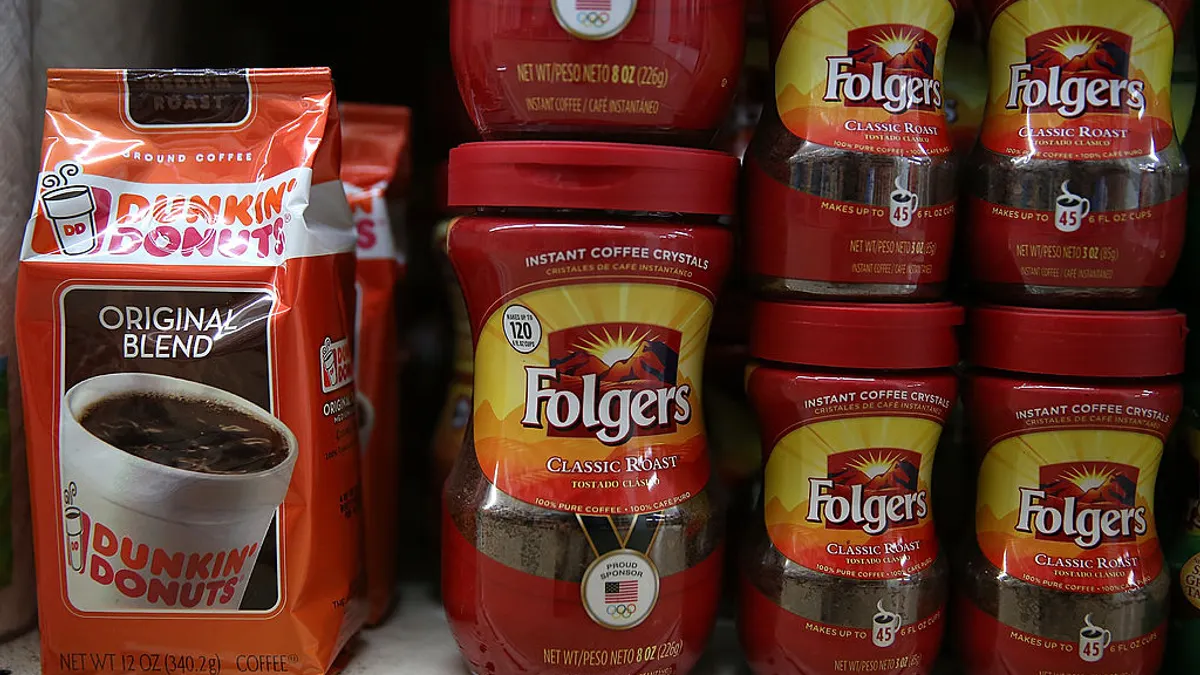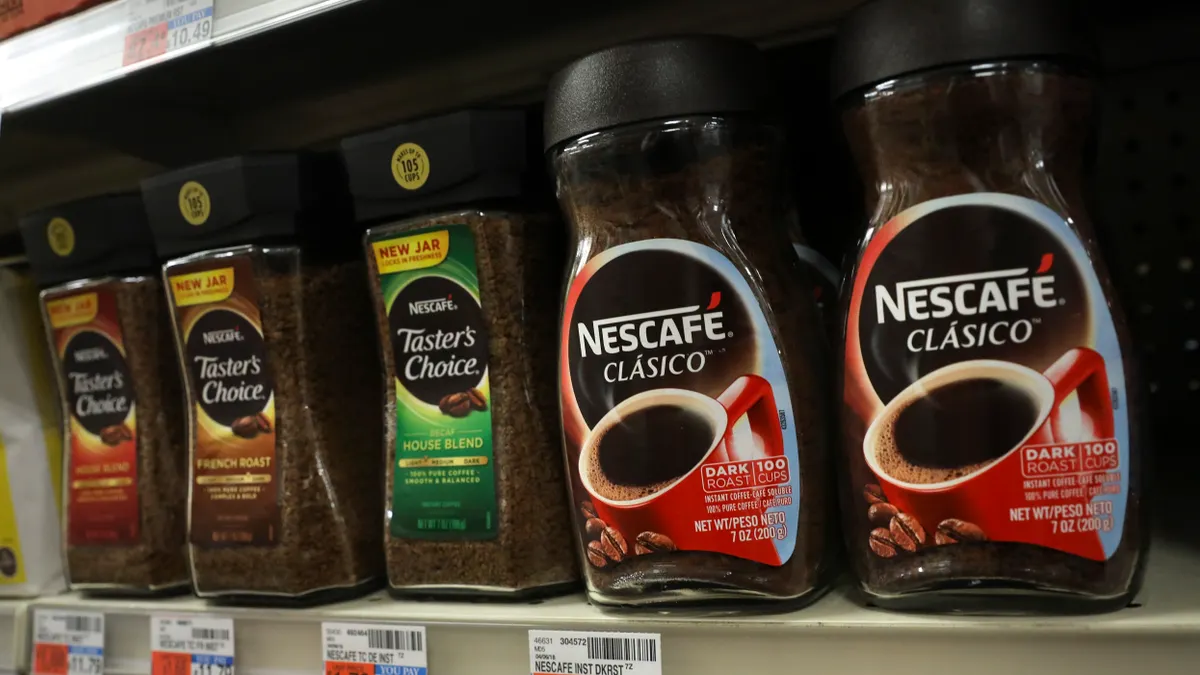This is a contributed op-ed written by Abe Eshkenazi, CEO of the Association for Supply Chain Management. Opinions are the author's own.
The patchwork of reopening strategies across the country has produced unreliable demand signals for essential and nonessential items. As states reopen at different times and in different ways, demand for nonessential items is likely to grow in one region while remaining stagnant in another.
This presents a challenge, particularly for companies that have adjusted output to anticipate changes in consumer buying patterns or that have converted manufacturing resources to produce essential items.
When demand for hockey equipment came to a halt during the pandemic, Bauer started making face shields and fabric face masks. The effort allowed the company to repurpose its Blainville, Quebec, plant instead of closing it, according to MarketWatch.
Similarly, Unilever changed its production plans to prioritize surface cleaners, personal hygiene products and packaged food, over items that were facing decreased demand, such as skin care products, Harvard Business Review reported.
These types of changeovers took time and required some financial investments. The moves were warranted.
But between the current economy and the daily changes in reopening and reclosing plans, it’s difficult to trust that nonessential demand will be there when the changeovers are complete. And now, as supply chains are being asked to switch back to support both types of products, the economic case for companies to do so is not as strong.
To help guide these and countless other tough supply chain decisions, corporate leaders must watch the numbers and continuously adjust their plans and expectations.
Calibrating to new demand patterns
Interestingly, measuring demand was easier at the beginning of the pandemic, when most major cities were shutting down.
Supply chain professionals could count on the fact that, for example, cleaning supplies and food products would not be needed at dormant restaurants, school cafeterias, hotels, stadiums, theme parks and cruise ships. On the other hand, as people spent more time working, cooking and entertaining themselves at home, demand surged for consumer food products, cleaning products and toiletries, as well as computer peripherals, bread machines and even puzzles.
In February, Procter & Gamble boosted production of Crest toothpaste and Olay moisturizer in preparation for plant closures and increased product demand, Fortune reported. In mid-April, P&G said that its sales rose 10% during Q3, as consumers stocked up on over-the-counter medicines, paper towels and toilet paper, and cleaning supplies, according to S&P Global Market Intelligence.
COO and Chief Financial Officer Jon R. Moeller said during a quarterly results conference call that the company’s operations and strategy may be forever changed by this pandemic. He said he expected there to be a sustained consumer shift toward cleaning more and practicing better hygiene, which, in turn, would result in a higher demand for related products. In addition, he said he believed there will be a permanent shift toward more P&G sales through e-commerce channels, which has required the company to alter its product packaging to make it more shipping friendly, S&P Global Market Intelligence reported.
Another example is The Hershey Company’s preparation for Halloween sales, which normally make up 10% of annual sales. Candy Industry reported that the confectioner started receiving Halloween orders back in May and expects to continue to ship Halloween products through early October. CEO Michele Buck said in the company's Q2 earnings call that Hershey planned to continue to monitor consumer behavior and local guidelines, and would work with retailers to help consumers celebrate the Halloween season.
For instance, Hershey collaborated with Albertsons to start the Halloween candy sale season as early as August, which stakeholders hope will help make up for less trick-or-treat product sales by encouraging consumers to indulge for the next two months, Business Insider reported. In addition, the company is scaling back its Halloween-themed packaging and instead focusing on more traditional packaging for candy that will be consumed at home.
Indeed, we must all work together to ensure high levels of cooperation between OEMs and suppliers, as well as public and private sectors, including governments, academic institutions, industry and philanthropic organizations.
As a study from Social Science & Medicine reveals, these types of partnerships combine public-sector strengths — social responsibility, accountability and local knowledge — with those of the private sector — innovation, technical capability, managerial efficiency and an entrepreneurial spirit.
Recovery means putting people first
But recovery is not just a financial issue — it’s a need issue and a people issue. And it will undoubtedly require shifting and expanding supply chain operations.
To produce essential items and to help the market rebound, it is vital that companies create safer work environments and protect people on the job. People are the foundation of every business, and they keep supply chains running.
We’ve already seen how COVID-19 can tear through a factory and bring operations to a halt when too many workers are sick. Temporary business closures only add to supply shortage problems. Organizations must plan ahead in order to avoid a repeat.
Until we have a vaccine or more advanced treatment protocols, employers will need to provide safe working environments, complete with strategies for social distancing or contact avoidance, sanitary workspaces with regular cleaning, protective barriers, temperature checks, paid sick leave, and ample personal protective equipment. Employees need to feel safe at work so they can focus on their roles without worrying about putting themselves and their families at risk. And they need to know that their companies care about them, because workers are what truly contribute value.
Supply chain workers are a company’s most valuable resource. They are the ones who will determine how to make sense of the inconsistent demand signals, produce the array of items people want and need, and deliver those items to the patient and consumer.
While our medical and science partners focus on the humanitarian issues, supply chain workers are the key to solving the upcoming challenges and returning the economy to a level of normalcy. We must give them a safe environment in which they can get our supply chains operating efficiently once again.
This story was first published in our weekly newsletter, Supply Chain Dive: Operations. Sign up here.





















